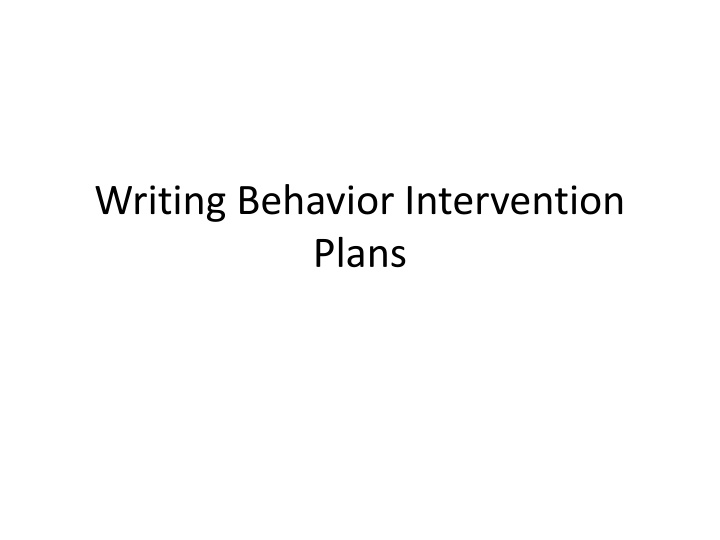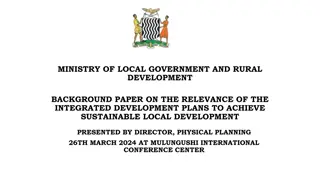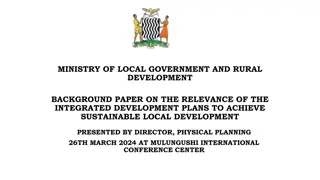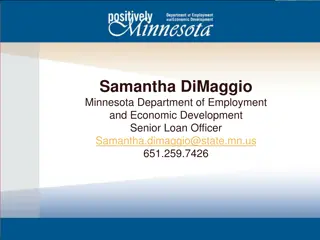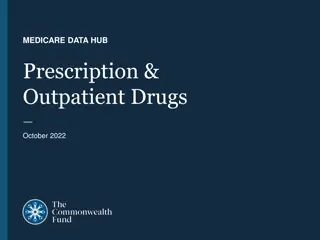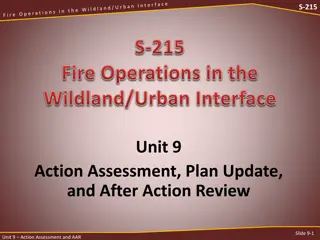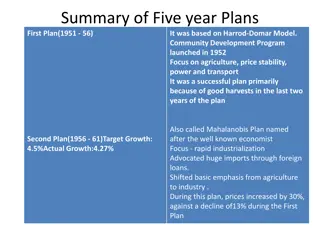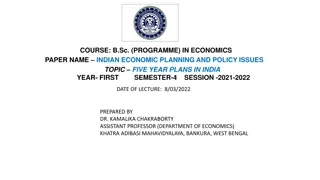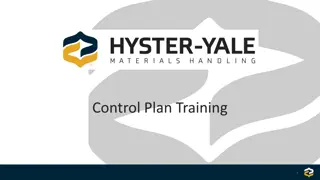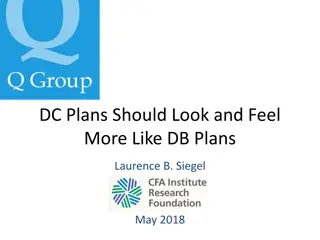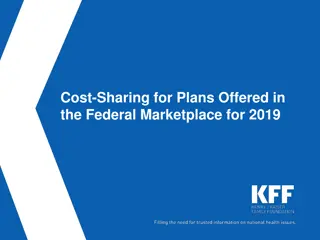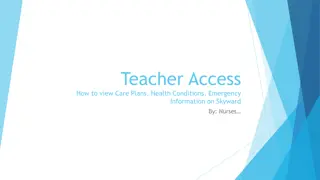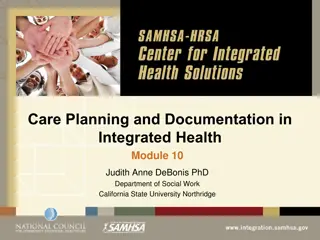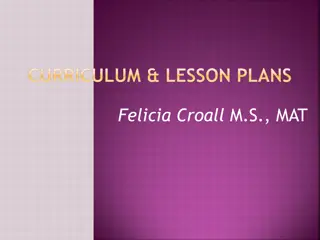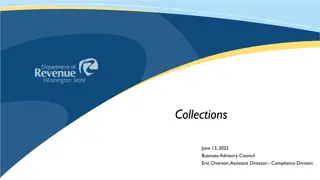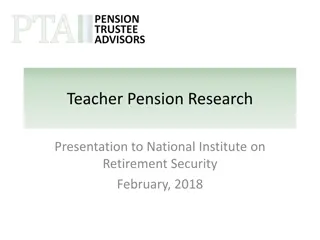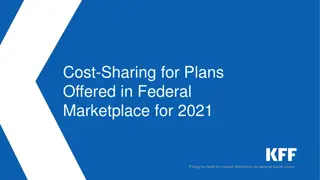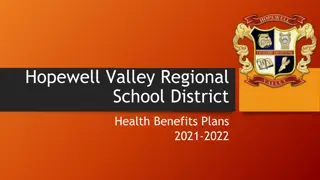Plans
Behavior intervention plans are essential tools that focus on modifying behaviors through applied behavior analysis techniques, addressing functions of behavior and consequences in various settings. Learn about behavior analysis principles, functions of behavior, and why behaviors occur to effectively implement intervention strategies.
Download Presentation

Please find below an Image/Link to download the presentation.
The content on the website is provided AS IS for your information and personal use only. It may not be sold, licensed, or shared on other websites without obtaining consent from the author.If you encounter any issues during the download, it is possible that the publisher has removed the file from their server.
You are allowed to download the files provided on this website for personal or commercial use, subject to the condition that they are used lawfully. All files are the property of their respective owners.
The content on the website is provided AS IS for your information and personal use only. It may not be sold, licensed, or shared on other websites without obtaining consent from the author.
E N D
Presentation Transcript
Behavior Behavior is what an individual does (says, writes), not a symptom Behavior is a unique to the individual and specific to the situation We are mostly concerned with operant behavior (i.e., voluntary behavior) Although respondent behavior ( involuntary behavior ) such as emotional reactions are important to consider Behavior is selected by its consequences
What is ABA? Applied Behavior Analysis ABA, applied behavioral analysis, is simply the application of behavioral principles, to everyday situations, that will, over time, increase or decrease targeted behaviors ABA has been used to help individuals acquire many different skills, such as language skills, self-help skills, and play skills; in addition, these principles can help to decrease maladaptive behaviors such as aggression, self-stimulatory behaviors, and self-injury Maladaptive behaviors are replaced with pro-social, appropriate behaviors ABA is a science that has been around for over 100 years and has proven effective in modifying behavior of both humans and animals ABA is a discipline that employs objective data to drive decision- making about an individual s program
Why does behavior occur? Behavior occurs for two reasons: To get something or To avoid something
Why does behavior occur? To get something .. To avoid something Attention from the teacher, peers, or parents Attention Sensory Stimulation Sensory Stimulation Preferred item or activity Undesirable environment Undesirable activity or task Undesirable person
Behavior Operant behavior is maintained by its consequences The closer the consequence (reinforcement or punishment) is to the behavior the more likely it is to have an impact on that behavior Reinforcement and punishment are most effective when delivered within 3 seconds of behavior
Functions of Behavior Function Example Student is on free time comes up to staff and hits them, staff stay stop , no hitting , don t do that etc. Attention Student is asked to complete a worksheet, student hits staff and drops to floor, student is removed from room Escape Student reaches for toy during work session, staff blocks, student begins hitting staff, staff give them toy Tangible While alone a student eats Germ-X, next time see Germ-X eats it again Automatic Student has an earache, student hits side of their head/face, pain is relieved momentarily Pain Attenuation
Student sits in seat quietly and receives candy, there is an increase in sitting quietly Student sits in seat quietly and homework is removed there is an increase in sitting quietly NEGATIVE REINFORCMENT Removing something aversive from environment that increases likelihood of behavior in the future POSITIVE REINFORCMENT Adding something to environment that increases likelihood of behavior occurring in the future increases behavior Adds Removes POSITIVE PUNISHMENT Adding something aversive to environment that decreases likelihood of behavior occurring in the future NEGATIVE PUNISHMENT Removing something pleasant from environment that decreases likelihood of behavior in the future decreases behavior Student shouts out and receives 20 extra math problems, there is an decrease in shouting out Student shouts out and recess is taken away, there is a decrease in shouting out
Reinforcement Reinforcement is anything that increases behavior Reinforcement can be getting good things (e.g., attention, toys, food) Reprimands and negative attention can sometimes be reinforcers for children Reinforcement can be getting rid of bad things (e.g., demands, bedtime, putting on shoes) Both good and bad behaviors are strengthened by reinforcement
Reinforcement vs Rewards Reinforcement and rewards are NOT the same thing Reinforcement is a SCIENTIFIC concept Reinforcement exists without our manipulation Reinforcement is an effect not a thing and reward is an everyday term used to describe an arbitrary item or thing that may or may not have any impact on behavior Not believing in reinforcement is like not believing in gravity
Reinforcement vs Bribery Reinforcement and bribery are NOT the same thing Bribery: the giving of a reward to an individual to stop an inappropriate or misbehavior (Webster s Dictionary) ** Positive reinforcement is the giving of something desired AFTER the APPROPRIATE behavior**
Changing Behaviors Using a 3 Prong Approach 1) Antecedent Interventions - Prevent behaviors from happening altogether - Visual prediction, coping skills and modification of work 2) Replacement Behaviors - teach appropriate behaviors 3) Consequence Interventions - provide reinforcement for appropriate behavior and put inappropriate behaviors on extinction
Antecedent Strategies Things that are put into place prior to a behavior occurring Used to set the student up for success
Predictability of Setting and Schedule 1. What am I going to do now? 2. What am I going to do next? 3. How much work do I have to do? How long will it take? 4. When do I get to take a break? 5. How long do I have to wait? 6. What do I get for working? When do I get it?
Time Prediction Digital Timer Visual Timer Schedules Checklists Count downs
Visual Schedules Use a symbol or word for each activity Include every activity showing a whole day or part of the day Utilize the Premack Principle (preferred, non- preferred, preferred tasks) Teach acceptance of changes Refer to the schedule and let student take ownership of it
Work Prediction Schedules Provides the learner with the number of tasks needed to complete before reinforcement occurs (typically a break away from the table) Make sure there is still plenty of reinforcement during the work at the table Student manipulates the work schedule like he/she would for their visual schedule
Token Economies Conditioned reinforcer Less susceptible to satiation Immediate reinforcement of the response but delays the actual reinforcer Provides the same reinforcement to the individuals who have different preferences
Behavior Mapping Creates a map of behavior choices Teachers cause and effect Present information visually Allows for the child to correct a bad choice Teaches compromise and problem solving skills
Interventions For Increasing Desirable Behavior
Replacement Behaviors Teach the student what you want them to do instead of the challenging behavior Challenging Behavior Replacement Behavior Hits and screams to make difficult work go away Requests help to complete work Grabs preferred toy from another student Asks other student if he can have a turn with toy Shouts out in class for attention Raises hand to gain attention
Differential Reinforcement Increasing the occurrence of a desirable behavior in others by systematically arranging for improvements to follow such behavior By arranging for reinforcers to occur more following one behavior relative to one or several others differential reinforcement has two effects 1) strengthens the favored behavior 2) weakens other behavior that is functionally similar
Differential Reinforcement of Alternative Behavior (DRA) Reinforce one topography of behavior in lieu of an existent and problematic form of the behavior Pinkston, Reese, LeBlanc, and Baer study of aggression in school children Baseline conditions teachers provided responses to peer aggression with admonishment (e.g. Don t do that ) and paid little attention to appropriate social interaction this resulted in relatively higher rates of aggression Teachers were then taught to no longer attend to the child who aggressed but rather to provide attention when the children engaged in desirable peer interactions Simple manipulation resulting in increase of appropriate peer interactions and decreased occurrences of aggression
Differential Reinforcement of High Rate Behavior (DRH) Providing reinforcement only if a minimum number of responses are emitted prior to the end of a specified time interval Ingham and Andrews study of treatment of stutter free speech Increase rate of speech Given a token for reaching progressively higher rates of spoken words per minute
Differential Reinforcement of Low Rate Behavior (DRL) Providing reinforcement for a response only when it occurs below a certain threshold Useful for maintaining a response at a particular moderate or low rate
Prompting Antecedent stimuli that increase the probability of a desired response Verbal prompts Physical guidance Gestural prompts Modeling prompts Avoid prompt dependence by vary prompts and fading them as soon as possible Prompt fading gradually removing a prompt
Interventions For Decreasing Problem Behavior
Antecedent Interventions for Decreasing Problem Behavior Events or conditions that are manipulated prior to the occurrence of a behavior Two Categories Default interventions do not depend on function Function-based interventions based on function of behavior
Default Interventions Antecedent exercise Sensory diets Physical/Sensory play DRO differential reinforcement of other behavior Enriched environment Access to preferred activities and tangibles Protective equipment
Function Based Interventions Noncontingent Reinforcement Presentation of an event or stimulus identified as as reinforcing consequence for problem behavior on a time-based or response-independent schedule Vollmer et al. study of attention maintained SIBs Presenting attention on a time-based schedule and withholding attention following problem behavior Produced an immediate and substantial decrease in SIBs Functional Communication Training (FCT)
Function Based Extinction Procedures Extinction - Discontinuation of reinforcement of a response Rarely used in isolation
Extinction of Problem Behavior Maintained by Social Positive Reinforcement Fyffe, Kahng, Fittro, and Russell study of inappropriate sexual behavior FA showed attention contingent behavior FCT to request attention Inappropriate sexual behavior ignored except to block
Extinction of Problem Behavior Maintained by Socially Mediated Negative Reinforcement Escape Approximately 33% to 48% of problem behaviors are maintained by negative reinforcement (removal of demands) Extinction of negatively reinforced behaviors requires that the escape or avoidance of the demand is discontinued Wait out or physical assistance
Extinction of Automatically Reinforced Behavior Self-stimulatory behaviors or sensory reinforced behaviors Sensory Extinction Blocking of source of reinforcement Rincover study of stereotypical object spinning Thick carpet placed over surfaces Response Blocking Mazaleski, Iwata, and Rodgers study of automatically maintained hand mouthing Gloves used to block sensory input
Extinction Burst Temporary increase in the frequency, intensity or duration of a target response that can occur with the onset of extinction Can be detrimental for two reasons 1) if target behavior is dangerous even a temporary increase in frequency, intensity, or duration may result in greater injury or destruction 2) Temporary elevation in behavior may make implementers less inclined to follow through with a treatment because if is too aversive to watch high levels of dangerous behavior
Extinction Burst Characteristics Response Variation - display novel or diverse behaviors Aggression Emotional Behavior agitation Spontaneous Recovery
Factors that Influence Efficacy of Extinction Baseline schedules of reinforcement Behavior that is intermittently reinforced during baseline is more resistant to extinction than behavior previously maintained on continuous reinforcement Amount, delay and magnitude of reinforcement in baseline
Extinction Burst 20 18 REINFORCEMENT BEHAVIOR Baseline Extinction 16 14 12 10 Candy every time Tantrum 8 6 4 2 0 1 2 3 4 5 6 7 8 9 10 11 12 13 14 15 20 18 Baseline Extinction 16 14 12 Candy 10th every time 10 Tantrum 8 6 4 2 0 1 2 3 4 5 6 7 8 9 10 11 12 13 14 15
Writing Set Up for BIP Client information Likes, dislikes, items for success Functional Behavior Assessment results Preventative Procedures and Positive Behavioral Teaching Strategies Explanation reinforcement system Behavior Intervention Strategies Function Antecedent Strategies Replacement Behaviors Behavior Response Strategies Generalization of Skills and Fading Protocol Crisis Plan Monitor and Evaluation Plan
